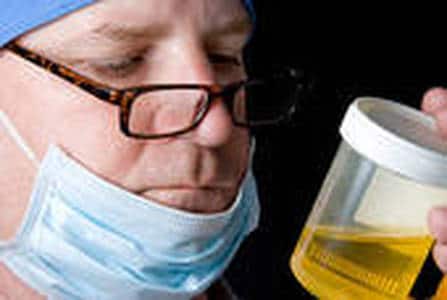The importance of the collection sites in the drug testing process cannot be emphasized enough. This is the only place where the testee (donor) is confronted with the drug test program and all of the prescriptive requirements. These prescriptive requirements include the collection facilities where the specimens are required to be collected according to a very strict protocol.
Why is the protocol or collection procedure so strict? The primary reason is the workplace drug tests are dealing with employment requirements where a non-negative test can result in being unemployed or some other unpleasant outcome. It stands to reason that an employee who has had their employment terminated may file a lawsuit for wrongful termination of employment. This is a far difference from specimens that are collected for clinical diagnostic purposes where no employment issues are involved.
When I was the Coast Guard Program Manager for the required drug and alcohol test program for the commercial maritime industry, I would see errors and often errors would be reported to me. When that happened I would inform the Investigating Officer of what type of corrective action or guidance that should be taken. Sometimes these reports would come to me as the result of a hearing before an Administrative Law Judge (ALJ).
Most of the errors that I saw were the result of poor training or lack of training. At times a collector would assume that collecting a urine specimen was a “piece of cake and no big deal if I did not follow protocol.” These collectors would do this not realizing the consequences of what could happen. These collectors would mistakenly assume that the test being collected was for clinical purposes, ignoring the forensic requirements for collecting the specimen.
Another common occurrence is the donor will be requested to place their initials on the bottle labels prior to the labels being affixed to the specimen bottles. It is very easy to determine when this occurred by examining Copy 2 of the Chain-of-Custody Form (CCF) where you could see the imprint. Why is this important is the collection requirements that the donor should place their initials after the labels have been affixed to the specimen bottles. Many times a collector will state to the donor that they need to initial the labels before the specimen is even collected. The donor is also requested to sign Block 3 on Copy 2 on the CCF. Collectors will request this even though the statement being signed states: “each specimen bottle used was sealed with a tamper-evident seal in my presence; and that the information provided on this form and on the label affixed to each specimen bottle is correct.” A collector will do this even before the donor goes into the bathroom facility to give their specimen. Why a collector will do this is to save time and that it will be easier for the donor to initial the labels while still affixed to the CCF.
Why the above happens is collectors often work in a medical facility where there are other concerns along with sick patients that need to be seen and treated. These individuals are overworked and have no or little training. They are often on the low end of the pay scale with no real incentive to do a good job or do it correctly. You can couple that factoid with donors that come in with an attitude of hurry up as I want to get out of here and with no or little knowledge of what is required of them. It is no wonder that there are errors that are compounded on each other.
I also saw and has to take action when a collector would go to the Medical Review Officer (MRO) instead of to the Designated Employer Representative (DER). The MRO has no role in the collection process. The role of the MRO starts when the specimen result is received by the MRO from the testing laboratory. This is again, the result of poor or ineffective training.
Training of collectors is very important. All training should be followed up with refresher training to all qualified collectors.
It has been stated in the past, there are 25 steps in the collection process going from the time that the donor walks in the front door to the time that the specimen bottles are sealed and ready for shipment. It was also stated if a collector is asked by the donor about what and how the test was performed that the donor should be referred back to the employer. The rationale was the expertise of the collector was with the collection of the specimen and did not go beyond that point.
Are you a certified DOT urine specimen collector? No, DOT does not certify collectors. Qualification is required with proper training and proficiency demonstration (Mock Collections); there must be documentation of both. Click Here if you need DOT collector training.
The next article will discuss about the weakest link the testing process.
Author: Robert Schoening
Drug and Alcohol Testing Consultant at Workplace Substance Abuse Consulting
Greater Seattle Area
Robert Schoening is well renowned for his knowledge and influence in the drug-testing arena. As the Drug and Alcohol Program Manager for the US Coast Guard (December 2001-March 2013) he developed and managed a successful drug testing program for the marine industry nationwide and internationally. During this time he developed and implemented a new compliance audit checklist as well as the writing and publishing a new Marine Employers Guidebook for Drug Testing. He is also the author of the federal regulation commonly known as the two-hour alcohol testing for maritime incidents.

